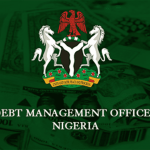The Project Lighthouse Program in Nigeria has harnessed the power of big data technology to effectively plug revenue loopholes, as stated by Mr. Victor Omata, the Director of Special Projects at the Federal Ministry of Finance, Budget, and National Planning.
During a one-day awareness event in Asaba, Delta State, for the South-South Geo-political region, Mr. Omata explained that the program, overseen by the Federal Ministry of Finance, Budget, and National Planning, plays a crucial role in pinpointing new revenue prospects, optimising existing income sources, particularly non-oil revenue, and enhancing fiscal transparency.
Mr. Omata emphasised that the Project Lighthouse Program, a pivotal revenue source for the federal government, is designed to address the persistent issue of debt recovery using cutting-edge big data analytics technology.
He revealed that Project Lighthouse (phase 2) is primarily focused on recovering debts owed to the federal government by individuals and businesses through the advanced debt recovery capabilities of the Project Lighthouse engine.
This system assimilates, integrates, and analyzes data from agencies responsible for generating revenue, thus offering valuable insights for informed decision-making regarding debt recovery.

Through the Project Lighthouse Program, the federal government has successfully retrieved substantial debts from both individual and corporate debtors, contributing to increased revenues from non-oil sources. According to Mr. Omata, the Program is part of the Strategic Revenue Growth Initiative (SRGI) portfolio of the federal government. This initiative has facilitated the consolidation of pertinent economic and financial information from multiple agencies that previously did not share data, addressing the issue of revenue loopholes that often stemmed from inadequate information sharing and enforcement.
Data from the Project Lighthouse Program has exposed a troubling trend where many entities that owe government agencies and have neglected their obligations are still receiving payments, particularly through government platforms like GIFMIS and the Treasury Single Account (TSA), due to a lack of visibility over these transactions.
Mr. Omata clarified that these debts encompass various forms, including debt liabilities to the Federal Inland Revenue Service (FIRS), unreimbursed payments made to companies for incomplete projects, outstanding credit facilities granted to corporations and individuals by the Bank of Industry (BOI) and Bank of Agriculture (BOA), as well as judgment debts favoring the government and debts owed to the Pension Transition Arrangement Directorate (PTAD) by insurance firms, among others.
He revealed that steps have been taken to address major revenue loopholes, such as the issuance of a Ministerial directive to aggregate government debts across the public finance space and extending the functionalities of the debt recovery capabilities of the Lighthouse Project Program.
These measures aim to automate the debt recovery process, making settlements as seamless as possible. The Ministry’s efforts have resulted in the consolidation of approximately N6 trillion worth of debts from 11 MDAs (Ministries, Departments, and Agencies), sourced from over 5,000+ debtors across 10 MDAs. This debt aggregation initiative is an ongoing endeavor.
Mr. Omata urged participants to support and commit to transforming the revenue landscape by leveraging the power of big data analytics and related technologies.
He stressed that quality and relevant debt-related data would aid in reducing the country’s indebtedness, enhancing daily revenue generation, and curbing revenue leaks and loopholes.
Organisations stand to gain significantly from the insights derived from the Project Lighthouse Program.

In conclusion, Mr. Joseph Faluyi, Director of Information Communication and Technology at the Federal Ministry of Finance, Budget, and National Planning, highlighted the importance of government funding and the role of the Project Lighthouse Program in tracking, recovering, and retrieving owed debts using technology.
He thanked participants on behalf of the Permanent Secretaries of Finance for their contributions and involvement.
The South-South Zonal sensitisation program witnessed participation from representatives of various government agencies, institutions, and hospitals, including the Federal Medical Centre (FMC) Asaba, Federal Polytechnic Ekowe, Federal Government Girls College Imiringi, Maritime Academy of Nigeria, Oron, University of Port-Harcourt Teaching Hospital, and National Business and Technical Examination Board (NABTEB), among others.
Similar sensitisation programs for the Light House Program were previously held in the South-West, North-West, and North-Central Geopolitical Zones of the country.



